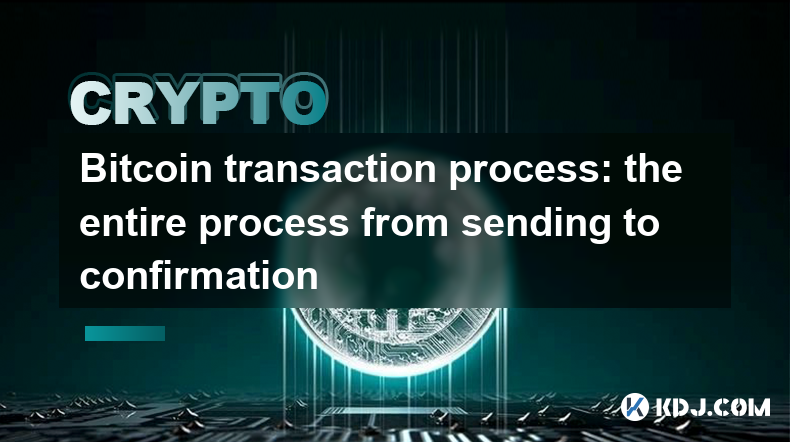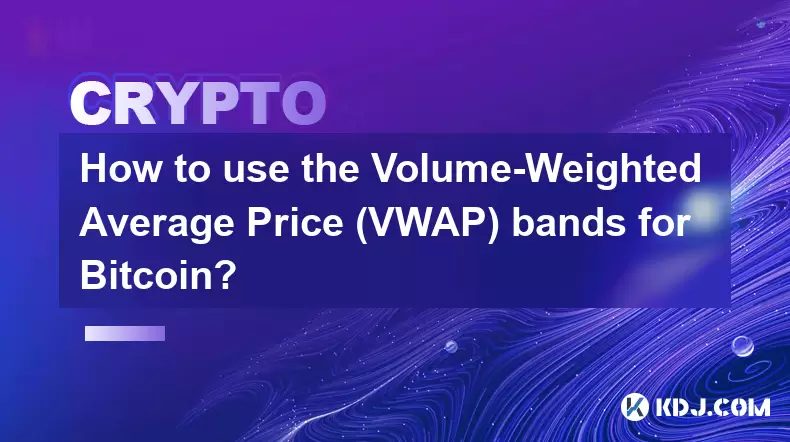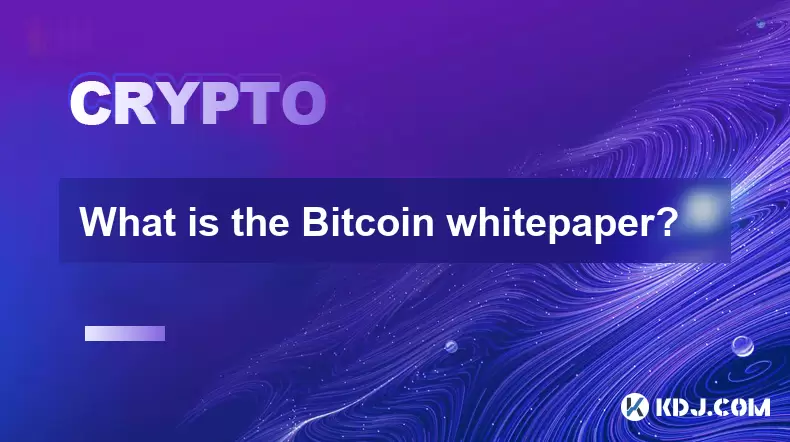-
 Bitcoin
Bitcoin $108,262.4325
-1.40% -
 Ethereum
Ethereum $2,518.2882
-2.94% -
 Tether USDt
Tether USDt $1.0003
-0.01% -
 XRP
XRP $2.2262
-1.71% -
 BNB
BNB $653.9254
-1.55% -
 Solana
Solana $148.1036
-3.11% -
 USDC
USDC $1.0000
0.01% -
 TRON
TRON $0.2829
-1.45% -
 Dogecoin
Dogecoin $0.1639
-4.82% -
 Cardano
Cardano $0.5742
-4.43% -
 Hyperliquid
Hyperliquid $38.9506
-3.95% -
 Sui
Sui $2.9040
-4.34% -
 Bitcoin Cash
Bitcoin Cash $484.8307
-2.62% -
 Chainlink
Chainlink $13.1971
-3.73% -
 UNUS SED LEO
UNUS SED LEO $9.0822
0.51% -
 Avalanche
Avalanche $17.8613
-4.01% -
 Stellar
Stellar $0.2385
-2.26% -
 Toncoin
Toncoin $2.7570
-3.88% -
 Shiba Inu
Shiba Inu $0.0...01145
-3.99% -
 Litecoin
Litecoin $86.9999
-2.43% -
 Hedera
Hedera $0.1538
-3.90% -
 Monero
Monero $313.7554
-2.03% -
 Polkadot
Polkadot $3.3681
-5.08% -
 Dai
Dai $1.0000
0.00% -
 Ethena USDe
Ethena USDe $1.0001
-0.01% -
 Bitget Token
Bitget Token $4.4401
-2.97% -
 Uniswap
Uniswap $6.9644
-8.41% -
 Pepe
Pepe $0.0...09666
-4.79% -
 Aave
Aave $266.5686
-5.04% -
 Pi
Pi $0.4713
-4.95%
Bitcoin transaction process: the entire process from sending to confirmation
Bitcoin transactions involve sending, broadcasting, mining, and confirming, ensuring secure value transfer across the globe.
Apr 11, 2025 at 06:42 am

Bitcoin transactions are a fundamental aspect of the cryptocurrency ecosystem, enabling users to transfer value across the globe securely and efficiently. Understanding the entire process from sending to confirmation is crucial for anyone involved in the Bitcoin network. This article will delve into the detailed steps involved in a Bitcoin transaction, highlighting the key stages and the roles of various participants in the process.
Initiating a Bitcoin Transaction
The process of sending Bitcoin begins with the sender, who needs to initiate the transaction. This typically involves using a Bitcoin wallet, which can be a software application, a hardware device, or even a paper wallet.
- Open your Bitcoin wallet and navigate to the section where you can send Bitcoin.
- Enter the recipient's Bitcoin address, which is a unique string of alphanumeric characters that identifies the recipient's wallet.
- Specify the amount of Bitcoin you wish to send. Ensure you double-check the amount to avoid errors.
- Set the transaction fee, which incentivizes miners to include your transaction in the blockchain. Higher fees can result in faster confirmation times.
- Review the transaction details carefully, including the recipient's address, the amount, and the fee.
- Confirm the transaction by entering your wallet's password or using a private key, depending on the wallet's security settings.
Once you confirm the transaction, it is broadcast to the Bitcoin network.
Broadcasting the Transaction
After the sender initiates the transaction, it is broadcast to the Bitcoin network. This involves sending the transaction data to multiple nodes on the network, which are essentially computers running Bitcoin software.
- The transaction data includes the sender's and recipient's addresses, the amount of Bitcoin being transferred, and the transaction fee.
- Nodes on the network verify the transaction's validity by checking the sender's signature and ensuring that the sender has the necessary funds.
- Valid transactions are then relayed to other nodes, spreading the transaction across the network.
This process ensures that the transaction reaches miners, who play a crucial role in confirming transactions.
Mining and Transaction Confirmation
Miners are responsible for confirming transactions and adding them to the Bitcoin blockchain. They do this by solving complex mathematical problems, a process known as mining.
- Miners collect a pool of unconfirmed transactions, including the one you initiated, into a block.
- They compete to solve a cryptographic puzzle, which requires significant computational power.
- The first miner to solve the puzzle gets to add the block of transactions to the blockchain and is rewarded with newly minted Bitcoin and transaction fees.
- Once a block is added to the blockchain, the transactions within it are considered confirmed.
However, a single confirmation is not always sufficient for high-value transactions. Many users wait for multiple confirmations to ensure the transaction's security.
Waiting for Confirmations
The number of confirmations required can vary based on the transaction's value and the recipient's requirements.
- One confirmation is generally considered secure for small transactions.
- For larger transactions, waiting for six confirmations is a common practice, as it significantly reduces the risk of a double-spend attack.
- Each confirmation occurs when a new block is added to the blockchain, which happens approximately every 10 minutes.
During this waiting period, the transaction's status can be monitored using a blockchain explorer, a tool that allows users to view transaction details and confirmations.
Finalizing the Transaction
Once the required number of confirmations is reached, the transaction is considered finalized. The recipient can now access the Bitcoin in their wallet.
- The recipient's wallet will update to reflect the incoming Bitcoin.
- The sender's wallet will show the outgoing transaction and the updated balance.
- Both parties can now consider the transaction complete and secure.
At this point, the Bitcoin has successfully moved from the sender to the recipient, completing the transaction process.
Frequently Asked Questions
Q: Can a Bitcoin transaction be reversed once it is confirmed?
A: No, once a Bitcoin transaction is confirmed and added to the blockchain, it cannot be reversed. This is one of the key features of Bitcoin, ensuring the security and immutability of transactions.
Q: What happens if a transaction fee is set too low?
A: If a transaction fee is set too low, miners may prioritize other transactions with higher fees, leading to delays in confirmation. In some cases, the transaction may remain unconfirmed for an extended period or be dropped from the mempool.
Q: How can I check the status of a Bitcoin transaction?
A: You can check the status of a Bitcoin transaction using a blockchain explorer. Enter the transaction ID (TXID) into the explorer, and it will show you the current status, including the number of confirmations and the block in which it was included.
Q: Is it possible to speed up a Bitcoin transaction after it has been broadcast?
A: Yes, it is possible to speed up a Bitcoin transaction by using a feature called Replace-By-Fee (RBF). If your wallet supports RBF, you can rebroadcast the transaction with a higher fee, which may encourage miners to prioritize it.
Disclaimer:info@kdj.com
The information provided is not trading advice. kdj.com does not assume any responsibility for any investments made based on the information provided in this article. Cryptocurrencies are highly volatile and it is highly recommended that you invest with caution after thorough research!
If you believe that the content used on this website infringes your copyright, please contact us immediately (info@kdj.com) and we will delete it promptly.
- Bitcoin's Pattern Break: Are HODLers the Key to the Next Surge?
- 2025-07-04 18:50:12
- Bitcoin Price, Trump's Bill, and the $150K Dream: A NYC Take
- 2025-07-04 19:50:12
- Ethereum, LILPEPE, and the July Bounce: Will Pepe Steal ETH's Thunder?
- 2025-07-04 19:10:12
- Binance Institutional Loans: Unlocking 4x Leverage and Zero Interest for Whales
- 2025-07-04 19:15:12
- Bitcoin Bull Run: Analysts Eye Peak in Late 2025?
- 2025-07-04 19:20:13
- Pepe Indicators, Bullish Forecast: Can the Meme Coin Rally?
- 2025-07-04 19:25:12
Related knowledge

What is the Woodies CCI indicator and can it be used for Bitcoin?
Jul 04,2025 at 05:14pm
Understanding the Woodies CCI IndicatorThe Woodies CCI indicator is a variation of the traditional Commodity Channel Index (CCI), which was originally developed by Donald Lambert. The standard CCI measures the current price level relative to an average price over a given period, typically 14. However, the Woodies version modifies this calculation to mak...

How to use the Volume-Weighted Average Price (VWAP) bands for Bitcoin?
Jul 04,2025 at 04:28pm
Understanding the Basics of VWAP BandsThe Volume-Weighted Average Price (VWAP) is a key metric used in trading to determine the average price at which an asset, such as Bitcoin, has traded throughout the day. It takes into account both volume and price, making it more reliable than a simple moving average. VWAP bands are essentially standard deviation c...

What is the VWAP indicator and how to use it for Bitcoin?
Jul 04,2025 at 05:28pm
Understanding the VWAP IndicatorThe VWAP (Volume Weighted Average Price) is a technical analysis tool used to determine the average price a cryptocurrency has traded at throughout the day, based on both volume and price. It provides traders with insights into the true average value of an asset by giving more weight to periods where trading volume was hi...

How to read Bitcoin candlestick charts for beginners?
Jul 04,2025 at 11:22am
Understanding the Basics of Candlestick ChartsCandlestick charts are a popular tool used in cryptocurrency trading to analyze price movements. Each candlestick represents a specific time period, such as one minute, five minutes, or even one day. For beginners, understanding how to interpret these charts is crucial for making informed trading decisions. ...

What is the role of Satoshi Nakamoto in Bitcoin?
Jul 04,2025 at 03:14am
Who is Satoshi Nakamoto?Satoshi Nakamoto is the pseudonymous individual or group responsible for creating Bitcoin, the world's first decentralized digital currency. Despite extensive research and speculation, the true identity of Satoshi Nakamoto remains unknown. The name was used in communications related to the development and release of the Bitcoin w...

What is the Bitcoin whitepaper?
Jul 04,2025 at 01:42am
What is the Bitcoin Whitepaper?The Bitcoin whitepaper is a foundational document published in 2008 by an individual or group using the pseudonym Satoshi Nakamoto. Titled 'Bitcoin: A Peer-to-Peer Electronic Cash System', it outlines the theoretical framework and technical specifications for creating a decentralized digital currency. This paper introduced...

What is the Woodies CCI indicator and can it be used for Bitcoin?
Jul 04,2025 at 05:14pm
Understanding the Woodies CCI IndicatorThe Woodies CCI indicator is a variation of the traditional Commodity Channel Index (CCI), which was originally developed by Donald Lambert. The standard CCI measures the current price level relative to an average price over a given period, typically 14. However, the Woodies version modifies this calculation to mak...

How to use the Volume-Weighted Average Price (VWAP) bands for Bitcoin?
Jul 04,2025 at 04:28pm
Understanding the Basics of VWAP BandsThe Volume-Weighted Average Price (VWAP) is a key metric used in trading to determine the average price at which an asset, such as Bitcoin, has traded throughout the day. It takes into account both volume and price, making it more reliable than a simple moving average. VWAP bands are essentially standard deviation c...

What is the VWAP indicator and how to use it for Bitcoin?
Jul 04,2025 at 05:28pm
Understanding the VWAP IndicatorThe VWAP (Volume Weighted Average Price) is a technical analysis tool used to determine the average price a cryptocurrency has traded at throughout the day, based on both volume and price. It provides traders with insights into the true average value of an asset by giving more weight to periods where trading volume was hi...

How to read Bitcoin candlestick charts for beginners?
Jul 04,2025 at 11:22am
Understanding the Basics of Candlestick ChartsCandlestick charts are a popular tool used in cryptocurrency trading to analyze price movements. Each candlestick represents a specific time period, such as one minute, five minutes, or even one day. For beginners, understanding how to interpret these charts is crucial for making informed trading decisions. ...

What is the role of Satoshi Nakamoto in Bitcoin?
Jul 04,2025 at 03:14am
Who is Satoshi Nakamoto?Satoshi Nakamoto is the pseudonymous individual or group responsible for creating Bitcoin, the world's first decentralized digital currency. Despite extensive research and speculation, the true identity of Satoshi Nakamoto remains unknown. The name was used in communications related to the development and release of the Bitcoin w...

What is the Bitcoin whitepaper?
Jul 04,2025 at 01:42am
What is the Bitcoin Whitepaper?The Bitcoin whitepaper is a foundational document published in 2008 by an individual or group using the pseudonym Satoshi Nakamoto. Titled 'Bitcoin: A Peer-to-Peer Electronic Cash System', it outlines the theoretical framework and technical specifications for creating a decentralized digital currency. This paper introduced...
See all articles

























































































